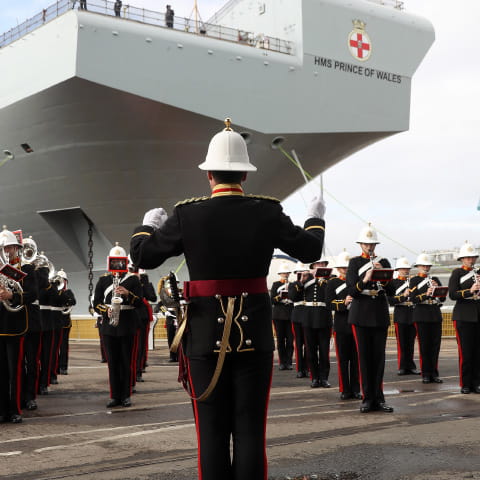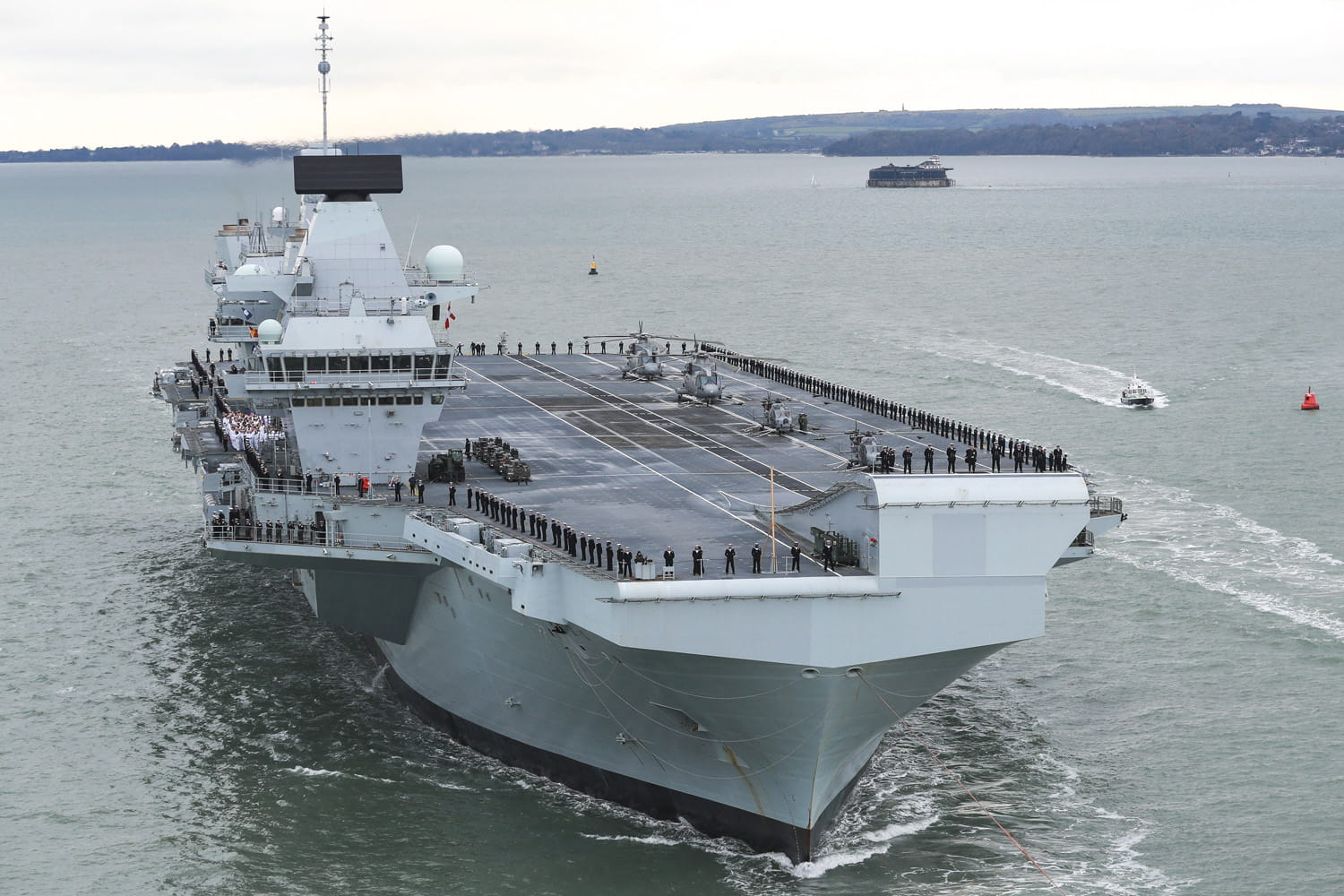Role
With an expected service life of up to 50 years, the floating cities of the Queen Elizabeth Class will be highly versatile and potent joint defence assets, able to meet the widest range of tasks around the world.
We see these ships as maritime platforms, adaptable and powerful, ready to deliver carrier strike missions, enforce no-fly zones, deploy Royal Marine Commandos, deliver humanitarian aid, and build international partnerships.
The ability to move 500 miles per day – combined with the speed and range of the F35 Lightning II – means these carriers can react at very short notice and make a real difference right around the globe. Find out all about how the Queen Elizabeth-class will equip us for the future here.

